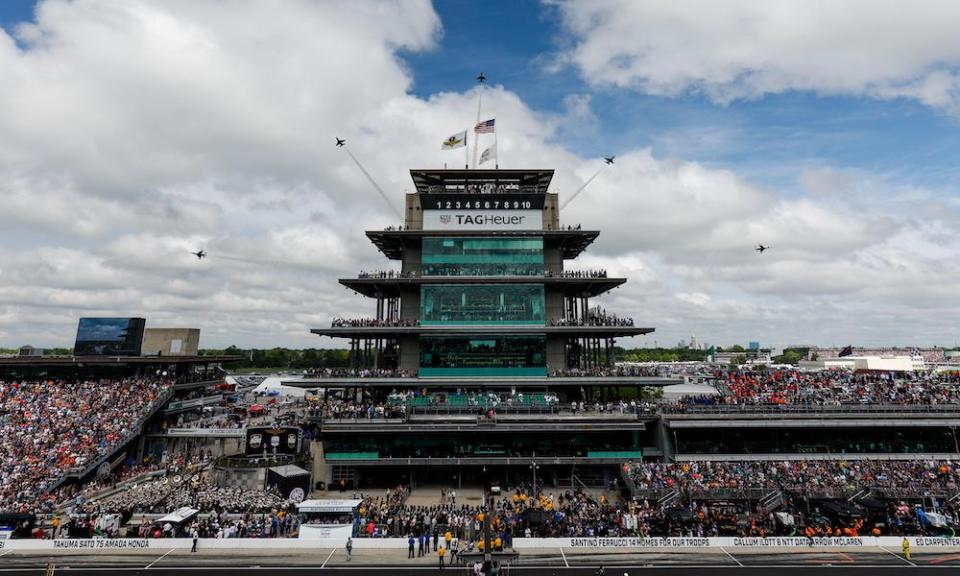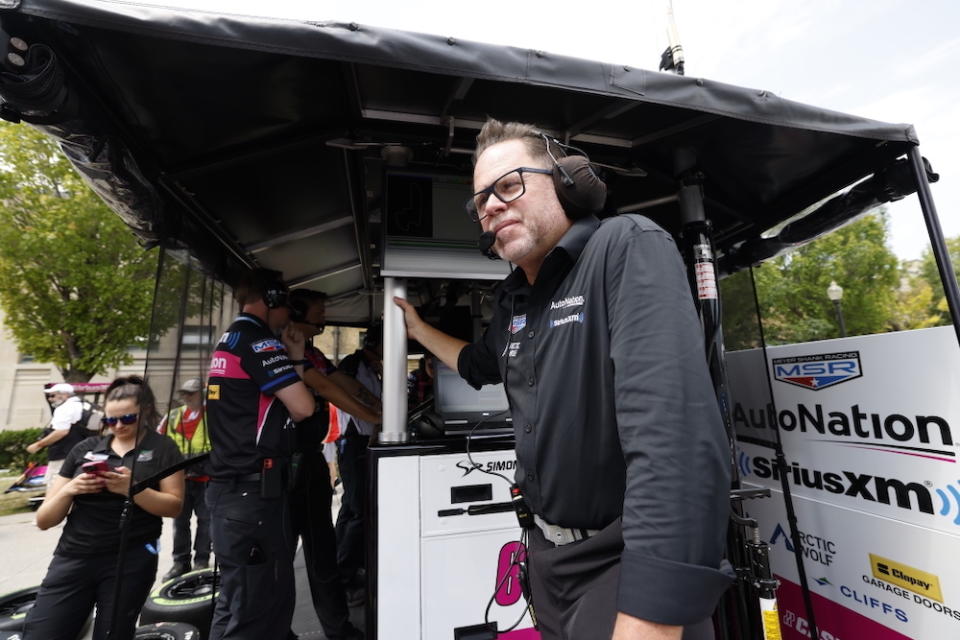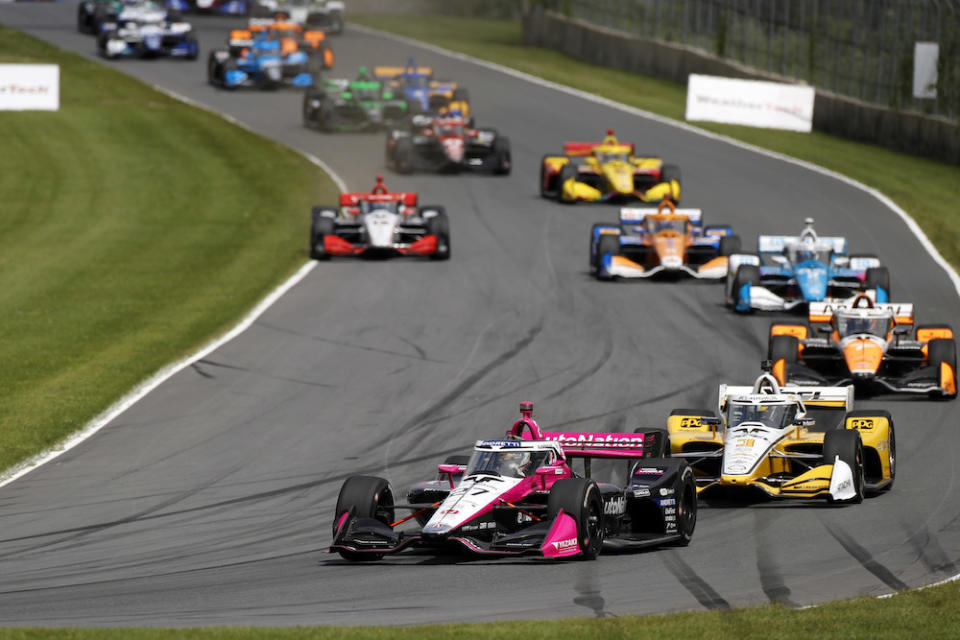Why IndyCar’s new TV deal with FOX is a winner

Penske Entertainment just delivered a grand slam with its new all-network TV deal with FOX.
The win is a major one for Roger Penske — his biggest to date with the series he purchased four and a half years ago – and the executives who negotiated the deal with FOX. Most importantly, it’s a massive victory for IndyCar teams, which has been sorely needed.
“It’s a great deal for the for the teams, great deal for Penske Entertainment, a great deal for the sport, and it’s the best deal for the fans,” Chip Ganassi told RACER.
In taking the NTT IndyCar Series to its first all-network broadcast deal in generations, Penske has given its paddock a major boost in revenue potential. And at a crucial time.
Recent meetings between Penske and the series’ independent team owners have seen the owners report a worrying spike in annual operating costs in recent years. The rise has been largely attributed to inflation and the financial demands associated with the upcoming switch to hybrid powertrains. Together, they’ve taken most budgets to somewhere between $8-$12 million per entry; wind the clock back a few years and teams would cite $6-$8 million per car.
Like every other form of professional motor racing, the primary financial mechanism that fuels each team is the value it can offer sponsors through the size of its television audience. More viewers equal better TV ratings, and with those ratings in hand, teams pitch sponsorship packages to companies to advertise their products or services to that audience.
In the blended network and cable broadcast packages IndyCar’s had over the last few decades, audience numbers have fluctuated wildly, and that’s been a problem. While the bigger numbers on the ABC or NBC networks have helped — often near or over 1 million viewers per race, outside of the Indy 500 — the races held on ESPN, the former NBC Sports Network, and more recently with NBC’s USA cable channel, often return audience figures in the 300,00-700,000 range, which makes it harder for teams to convince sponsors to spend top dollar on their cars.
Of late, the exclusive airing of one or two IndyCar races via streaming on Peacock has been a ratings killer – so bad in fact, the number has been ignored while compiling the annual ratings and audience average. Penske Entertainment CEO Mark Miles says there’s an estimated 50 percent increase in network time coming to IndyCar on FOX.
It’s here, in the shift to the 100 percent network TV model, where the opportunity to regularly and consistently deliver more than 1 million viewers for each of IndyCar’s 17 races in 2025 and beyond should help the A.J. Foyt Racings and the Meyer Shank Racings and the Rahal Lettman Lanigan Racings and the rest to go forth and sign more lucrative sponsorship deals once the series starts appearing on FOX.
“This is, without a question, one of the biggest days for IndyCar to help build value for our sponsors,” said Mike Shank. “We’re continually begging for more eyeballs on our product, and by doing this, by assuring us that we’re going to be on network television with an expanded network lineup, this potentially helps tremendously for us.

Mike Shank is one of several IndyCar team owners who see lots of upsides in the move to an all-network broadcasting deal. Michael Levitt/Motorsport Images
“A huge thank you for those guys, Penske and all the upper management there for listening to us and getting something done like this. And that’s how I feel about it. We’re always saying how the return doesn’t match the cost, right? Well, this helps the equation to come right. And maybe it gets there, maybe it doesn’t, but at least we’re going there, fighting hard.”
Shank also spoke for many after the series endured a rough couple of weeks prior to the announcement.
“We needed a ‘W’ (win) for us right now,” he said. “We needed a W because it sure seems like we’ve been just getting beat up a lot lately. So I’m super happy for this.”
Bobby Rahal concurs.
“It’s fantastic news,” he said. “Every race on network is huge. That is a great accomplishment for Roger and his team. I think it’s fantastic because, let’s face it, being on USA Network or CNBC, or channels like that, that’s pretty much when we disappear from view. Being on network, that’s where the bulk of Americans still watch network television.
“When I look back and remember how much promotion FOX has done for NASCAR, hopefully they’ll do the same for us. So I’m excited about the fact that all 17 races will be on the network, because that’s something you can sell.”
McLaren Racing CEO Zak Brown shares in Rahal’s enthusiasm, and points to FOX Sports CEO Eric Shanks as a significant asset to enter the world of IndyCar. Born southwest of the Indianapolis Motor Speedway in Brazil, Indiana, Shanks has been a lifelong fan of IndyCar and brings a level of love and expertise to the series that shouldn’t be underestimated.
“It’s a fantastic TV package, the best IndyCar has ever had, in my opinion,” Brown said. “FOX has a great history in motorsports and Eric Shanks knows sports inside and out and has a big passion for IndyCar. This is the perfect result.”
The head of IndyCar’s new TV partner even has a permanent trailer of his own positioned on Georgetown Road — across the street from Turn 1 at Indy — where he and friends have partied during the 500 for a good while.
Although broadcasters of every series receive their share of love and hate from fans, NBC has elevated IndyCar’s presentation to new heights during its tenure as the series’ exclusive partner. The same is true for FOX, and concerns have already been expressed about the quality of FOX’s NASCAR broadcasts, which can veer hard into folksy and unserious territory at times.
But the culture of stock car racing is obviously different from IndyCar, and I wouldn’t expect next year’s open-wheel content to be presented in a simple cut-and-paste manner from its NASCAR Cup presentations.

Amid growing concerns about the operating cost for teams, there is a sense that the new TV deal will prove a more attractive proposition for potential sponsors. Phillip Abbott/Motorsport Images
During my eight years at SPEED Channel/FOX Sports, its approach to series that were similar in culture to IndyCar with the former American Le Mans Series and Grand-Am Rolex Series, and its annual coverage of the 24 Hours of Le Mans through 2017, delivered some of the best racing productions of any kind that celebrated the core of what its audiences wanted.
And thanks to Shanks’ deep understanding of what makes IndyCar unique, I would expect the same focus to be applied to FOX’s newest racing series. NBC has set a high bar for FOX to reach, and while I don’t want to tune in and find the NASCAR-ification of IndyCar, I’m sure there are some formulas FOX Sports has used with Cup that would help IndyCar to widen its fan base.
It’s too soon to say what the IndyCar on FOX broadcasts will look like, and who will be in the booth and on pit lane, but simply put, I don’t expect to see IndyCar fall prey to the hokey ‘Boogity-Boogity-Boogity’ routine that once drew fans to NASCAR on FOX. But I also hope FOX Sports doesn’t completely abandon some of what it does with NASCAR to the point that IndyCar loses out on some of the creativity it has authored in Cup.
Striking the right balance of being authentic for IndyCar fans but welcoming enough to attract new fans — maybe those who are turning in early for NASCAR, or coming out of a Cup race on FOX — will be critical for the series’ new partner.
“I had a good catch up with (NASCAR chairman) Jim France yesterday, walking him through this, and I think there’s going to be a great halo effect for all motorsports,” Shanks said. “Once you start to put the two schedules together, both Indy and NASCAR, I think there’s going to be a great halo effect because a lot of times they’re going to be leading in and out of each other.
“And I think that circulation and promotion is going to fit both series, definitely. I’m incredibly proud that I believe this is the first time the Daytona 500 and Indy 500 (will be) broadcast live on the same network. I think that’s also very cool for motorsports, for both Indy and for NASCAR.”
Returning to the most meaningful possibilities with the FOX deal and how it should help teams to find more money through better average TV ratings and bridge the budget gaps, there’s one other area where it could help IndyCar solve one of its trickiest problems.
As Shank referenced, IndyCar has struggled to provide its teams and auto manufacturers with the kind of return-on-investment they want, and with the all-network FOX move, a sizable improvement in IndyCar’s TV audience can only help the series to convince Honda to stay.
The new deal also places exceptionally high expectations on Penske Entertainment, as it moves into the multi-year deal, to make use of the 17 races on network to land a third and maybe even a fourth manufacturer. Relegated to two brands in Chevy and Honda for 12 seasons, courting and signing a third engine supplier has eluded Penske just as it eluded the series’ former owners.
If the ratings of IndyCar on FOX don’t bring a new manufacturer or two into the series, nothing will.
Spare a thought for all of the incredible on-air and behind-the-scenes production talent at NBC Sports who will surrender a series they never wanted to lose. Some will sign and migrate to FOX, but many won’t. NBC couldn’t match what FOX was able to offer with the all-network plan, and to Penske Entertainment’s great credit, they did what was in the best interest of the paddock and made the difficult decision to leave.
There will be plusses and minuses once FOX’s cameras go live next year at St. Petersburg, and some fans have already told me they won’t be watching. But if all of the possibilities this new relationship come to fruition, many new fans, many new dollars and, if we’re fortunate, new automobile companies will appear.

 Yahoo Autos
Yahoo Autos 